41 how to look for calories on food labels
This Is How to Read a Nutrition Facts Label on the Keto Diet Depending on the daily carb intake you've determined for yourself to stay in ketosis, this is a quick way to determine whether you have room in your daily eating plan for a particular food. (Remember, a ketogenic diet is typically a ratio of about 70-75% fat, 15-25%+ protein, and 5% or less of calories from carbs.) What To Look For On Nutrition Labels & Why It Matters Our calories are virtually the same as is the amount of protein. Of course with a protein powder, looking for the most amount of protein is what gives you that desired muscle growth and enhanced recovery. Next is to look at the amount of carbs and fat. Both these products have 2 grams of carbs which isn't anything crazy in the grand scheme of ...
How to Read Nutrition Labels for Weight Loss and Health To determine the type of fat in a product we must check the nutrient values further down on the label. If an item has a low amount of calories from fat, but appears to have a high number of calories, check the sugar content. 1. Nutrients- Fat, carbohydrates, protein, sodium and fibre. This part of the nutrition label features quantities and ...

How to look for calories on food labels
How to Read the Nutrition Facts Label on Packaged Foods - WebMD Sodium. Many people get far too much salt, or sodium. Most of it is in packaged foods and restaurant items. Limit salt to 2,300 milligrams (about 1 teaspoon) daily. If you have high blood pressure ... Use the Nutrition Facts Label - National Institutes of Health When using the Nutrition Facts label as a guide, try these tips: Keep these low: saturated fats, trans fats, cholesterol, and sodium. Get enough of these: potassium, fiber, vitamins A and C, calcium, and iron. Use the Percent Daily Value (% DV) column when possible; 5% DV or less is low, 20% DV or more is high. Visit the Smart Food Shopping ... How To Understand Nutrition Facts Labels: A Guide To Food Labels Similarly, a healthy diet high in calcium, iron, vitamin D, and potassium can help reduce the risk of certain major health concerns like compromised bone health, red blood cell deficiency, and an increase in your blood pressure. 3. Labels can help you eat cleanly. Food nutrition labels can help you create your own version of a healthy diet.
How to look for calories on food labels. How to Read Food Labels Without Being Tricked - Healthline Still, processed foods that are labeled low-carb are usually still processed junk foods, similar to processed low-fat foods. Made with whole grains. The product may contain very little whole ... How to Understand and Use the Nutrition Facts Label | FDA - U.S. Food ... When looking at the Nutrition Facts label, first take a look at the number of servings in the package (servings per container) and the serving size. Serving sizes are standardized to make it easier... Reading Food Labels (for Parents) - Nemours KidsHealth The number of calories that's listed on the food label indicates how many calories are in one serving. Percent Daily Values. Percent daily value is most useful for seeing whether a food is high or low in nutrients: A food with 5% or less of a nutrient is low in that nutrient. A food with 10%-19% of a nutrient is a good source of that nutrient. The Basics of the Nutrition Facts Label - Academy of Nutrition and ... Step 4: Check Out the Nutrition Terms. Low calorie: 40 calories or less per serving. Low cholesterol: 20 milligrams or less and 2 grams or less of saturated fat per serving. Reduced: At least 25% less of the specified nutrient or calories than the usual product. Good source of: Provides at least 10 to 19% of the Daily Value of a particular ...
Food labels - NHS Nutrition information labels on the back or side of packaging. Most pre-packed foods have a nutrition information label on the back or side of the packaging. These labels must include the amount of energy in kilojoules (kJ) and kilocalories (kcal), usually referred to as calories. 3 Ways to Calculate Food Calories - wikiHow When assessing a food's nutritional value, you should look at 3 things: protein, carbs, and fat. These macronutrients account for all of the calories in the item (aside from calories from alcohol). As a result, the exact amount of each macronutrient indicates what proportion of the total calories they make up. [2] How to Read Food Labels for a Heart-Healthy Diet The lower the net carbs, the better." Berries: "I usually choose blueberries, which are anti-inflammatory and not as high in sugar as bananas.". Yogurt: "I choose a low-fat brand that's marketed as 'diabetes friendly' on the label, which means it's low in carbohydrates. You get all the benefit of yogurt with far fewer carbs. Reading food labels: Tips if you have diabetes - Mayo Clinic The same goes for the Daily Value listed on food labels. This percentage, which is based on a 2,000-calorie-a-day diet, helps you gauge how much of a specific nutrient one serving of food contains, compared with recommendations for the whole day. A low amount is 5% or less; 20% or more is high.
How to Read Nutrition Facts Labels the Right Way - GoodRx Potassium. Calcium. Iron. Vitamin D. Most Americans do not consume enough of these nutrients, but they all can play a role in protecting your body from diseases, lowering your blood sugar, and improving your cholesterol levels. It's a good idea to choose foods that contain higher amounts of these nutrients. How to understand food labels | Eat For Health Sometimes labels will include nutrition content claims like 'low fat', 'reduced salt' or 'high fibre'. These claims can only be used if the food meets certain criteria. For example, with a 'good source of calcium' claim, the food must contain more than a set amount of calcium. While nutrition content claims can generally guide ... Easy Guide to Understanding Food Labels When You Have High ... - MyDoc 1. Choose products low in saturated fat, trans fat and cholesterol. When shopping for food, use the nutrition information panel to compare and choose products with lower fat, saturated fat and cholesterol content. Saturated fat is a type of fat that raises your total and LDL cholesterol and risk of heart disease, so intake should be limited. How Do They Calculate Calories on Food Labels? Finally, the calories are determined by calculating the change in water temperature multiplied by the volume of water. Calories on food labels. The 1990 Nutrition Labeling and Education Act (NLEA) for the first time required that food manufacturers put the amounts of nutrients and calories on the package label.
How-To Guide for Reading Food Labels - The Society for Cardiovascular ... The General Guide to Calories provides a general reference for calories when you look at a Nutrition Facts label. This guide is based on a 2,000 calorie diet. 3. Limit These Nutrients. When following heart-healthy guidelines, it is helpful to use the Nutrition Facts Panel to find information about fat, cholesterol and sodium in foods. These are nutrients to limit due to their harmful effects on blood pressure and heart disease risk.
Ask the Diet Doctor: Assessing Packaged Foods - msn.com 1. Servings: This is the first place to look because it puts everything into context. Bread is a great example of this. 2. Calories: The type of calories you are going to eat is very important, but the total calories you are going to... 3. Protein: Once you look at the total calories in your ...
Food Labels: Fat & Cholesterol | Home & Garden Information Center The 2015 Dietary Guidelines for Americans recommends the following intakes of fat and cholesterol every day: total fat—20 to 35% of calories, depending on age and gender (65 grams for the 2,000-calorie intake level used in the Daily Value)*. saturated fat—less than 10% of calories**. trans fat— keep as low as possible.
Food Labels | CDC - Centers for Disease Control and Prevention If you eat the whole thing, you are eating 8 times the amount of calories, carbs, fat, etc., shown on the label. Total Carbohydrate shows you types of carbs in the food, including sugar and fiber. Choose foods with more fiber, vitamins, and minerals. Choose foods with lower calories, saturated fat, sodium, and added sugars.
How to read food labels: MedlinePlus Medical Encyclopedia Always check the serving size first. All the information on the label is based on the serving size. Many packages contain more than 1 serving. For example, the serving size for spaghetti is most often 2 ounces (56 grams) uncooked, or 1 cup (0.24 liters) cooked. If you eat 2 cups (0.48 liters) at a meal, you are eating 2 servings.
5 tips for decoding food labels - Harvard Health The servings per container tell you know how many portions are in the whole box, package, or can. Beware: many packages contain more than one serving. Look at your orange juice for example. If the label says 125 calories per 8 ounce serving and your breakfast includes a 16 ounce glass of OJ, then you've taken in 250 calories from the juice alone.
How to Read Food Labels: Your Complete Consumer Guide The rightmost column of the Nutrition Facts portion of the label gives you the percent of Daily Value (DV) of that particular food component. Most labels carry an asterisked explanation such as, "The % Daily Value (DV) tells you how much a nutrient in a serving of food contributes to a daily diet. 2,000 calories per day is used as general nutrition advice."
Understanding Food Nutrition Labels | American Heart Association Learn what to look for on the label. 1 - Start with the serving information at the top.. This will tell you the size of a single serving and the total number... 2 - Next, check total calories per serving and container.. Pay attention to the calories per serving and how many... 3 - Limit certain ...
What to Look For on Nutrition Labels - dummies This list gives you the skinny on the most important information featured on Nutrition Facts labels: Calories: The calorie total is based on the stated serving size — so if you eat more or less than what the label lists as one portion, you need to do the math. Dietary fiber: Choose the foods with the most fiber. Research shows that people who eat plenty of fiber also eat fewer calories.
How To Read Food and Beverage Labels - National Institute on Aging At the top of the Nutrition Facts label, you will find the total number of servings in the container and the food or beverage's serving size. The serving size on the label is based on the amount of food that people may typically eat at one time and is not a recommendation of how much to eat. Read more about serving and portion sizes.
How To Understand Nutrition Facts Labels: A Guide To Food Labels Similarly, a healthy diet high in calcium, iron, vitamin D, and potassium can help reduce the risk of certain major health concerns like compromised bone health, red blood cell deficiency, and an increase in your blood pressure. 3. Labels can help you eat cleanly. Food nutrition labels can help you create your own version of a healthy diet.
Use the Nutrition Facts Label - National Institutes of Health When using the Nutrition Facts label as a guide, try these tips: Keep these low: saturated fats, trans fats, cholesterol, and sodium. Get enough of these: potassium, fiber, vitamins A and C, calcium, and iron. Use the Percent Daily Value (% DV) column when possible; 5% DV or less is low, 20% DV or more is high. Visit the Smart Food Shopping ...
How to Read the Nutrition Facts Label on Packaged Foods - WebMD Sodium. Many people get far too much salt, or sodium. Most of it is in packaged foods and restaurant items. Limit salt to 2,300 milligrams (about 1 teaspoon) daily. If you have high blood pressure ...



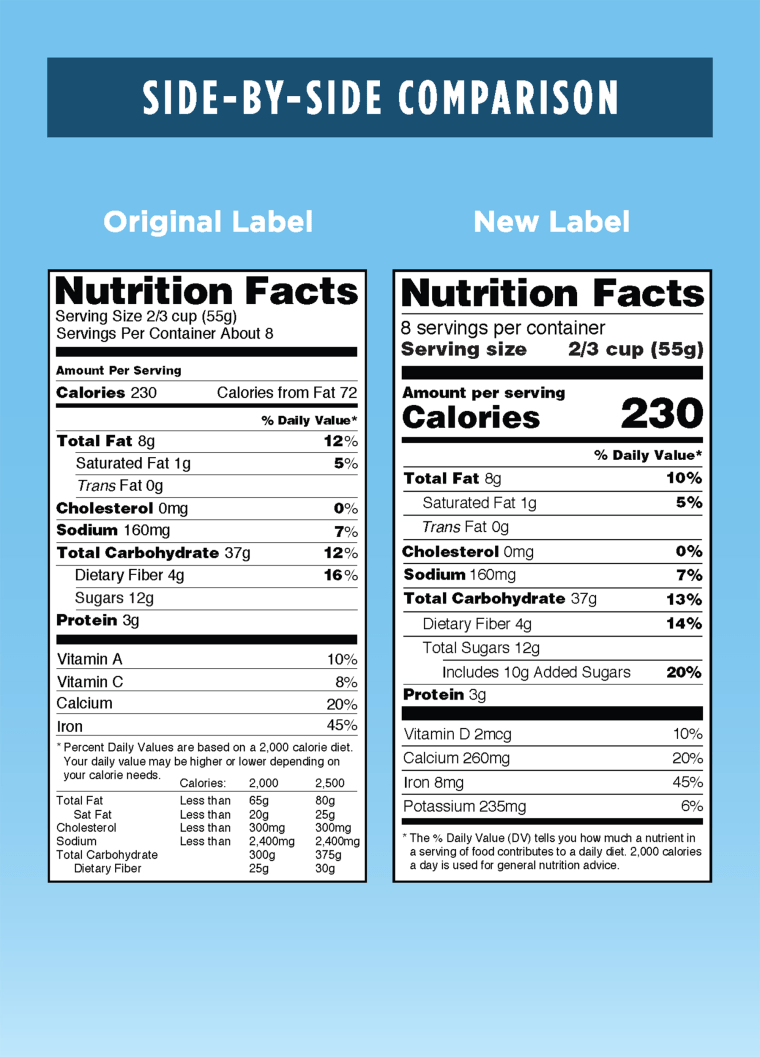

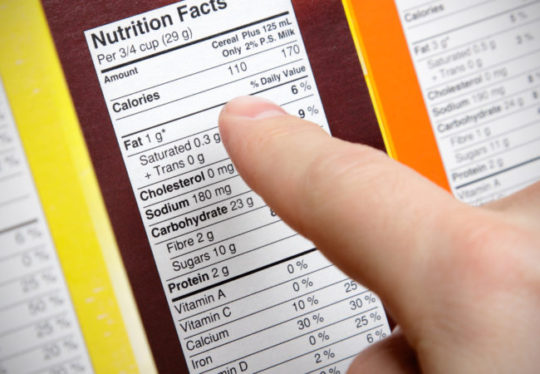
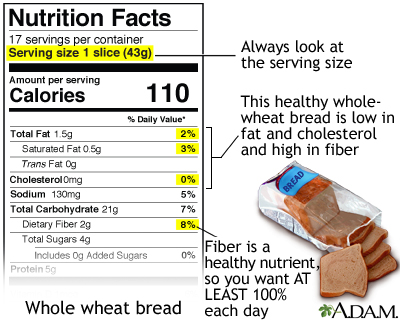
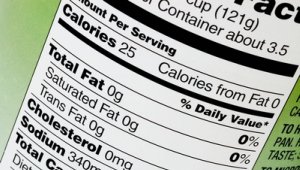

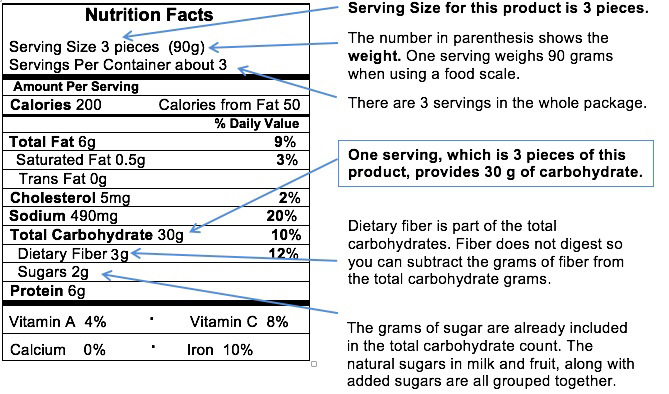
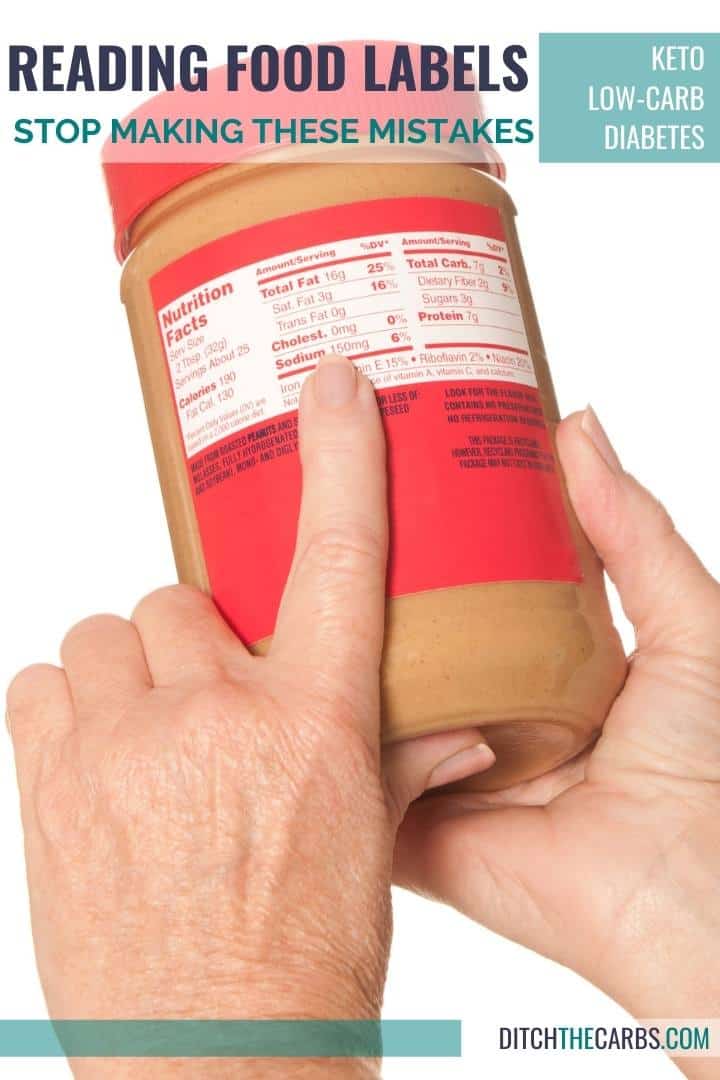

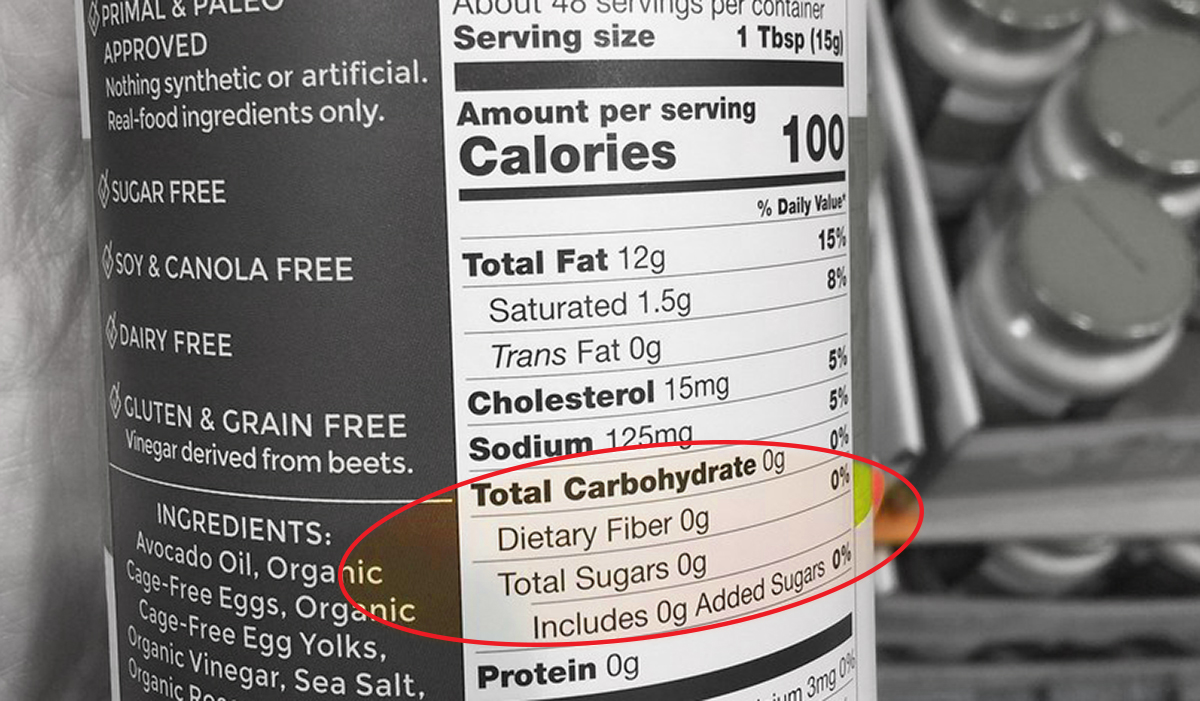
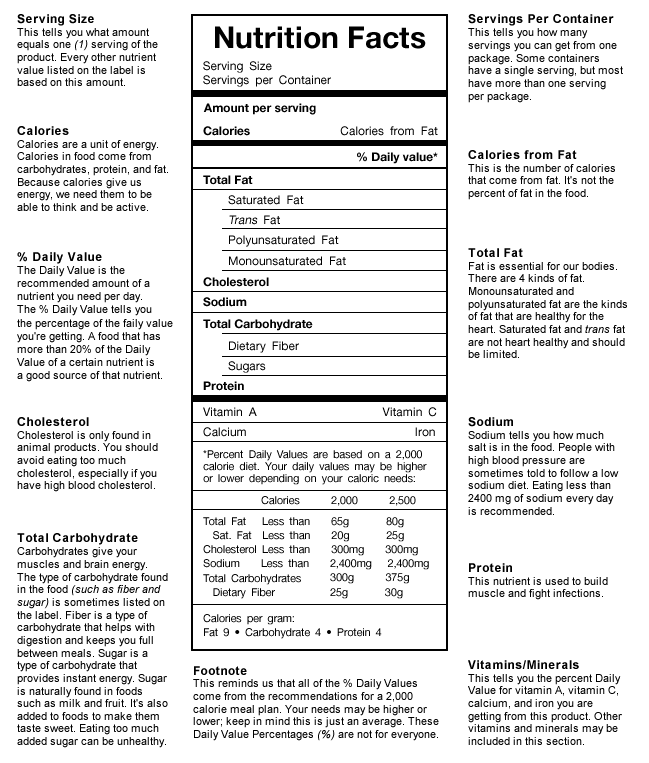




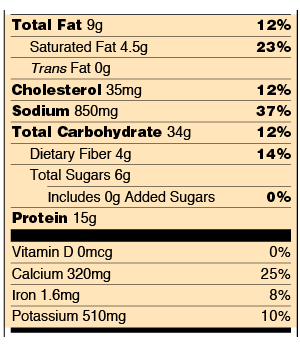
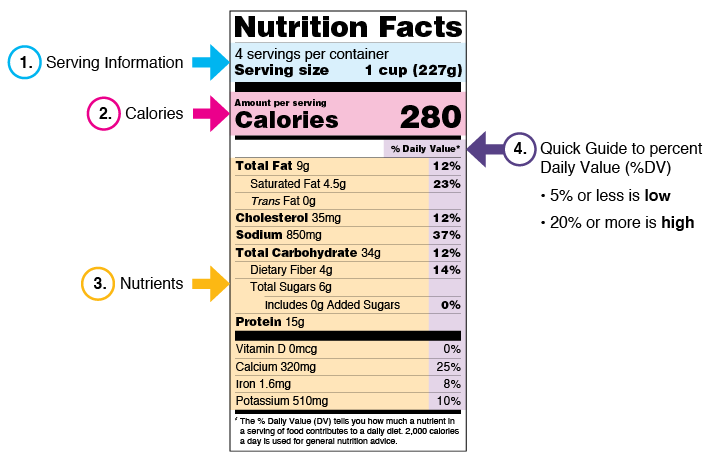

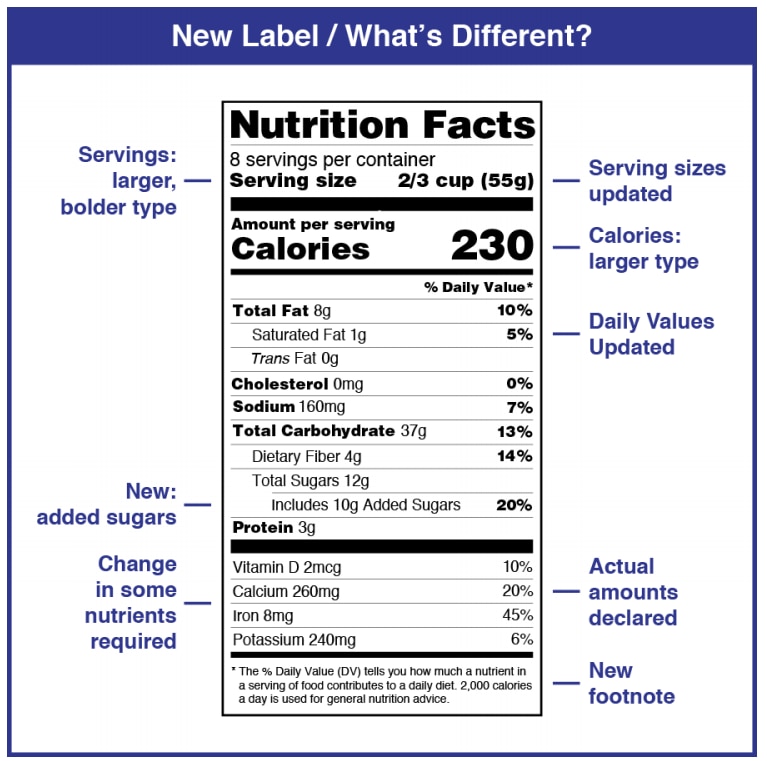

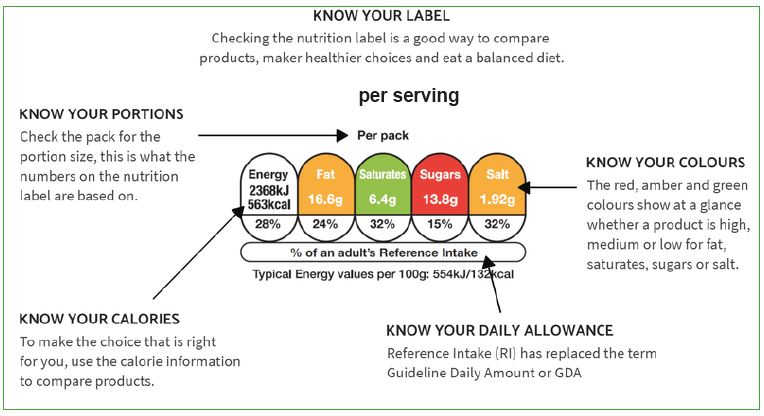

:max_bytes(150000):strip_icc()/Untitled-design-1--57535a9a5f9b5892e8c4a7b4.jpg)
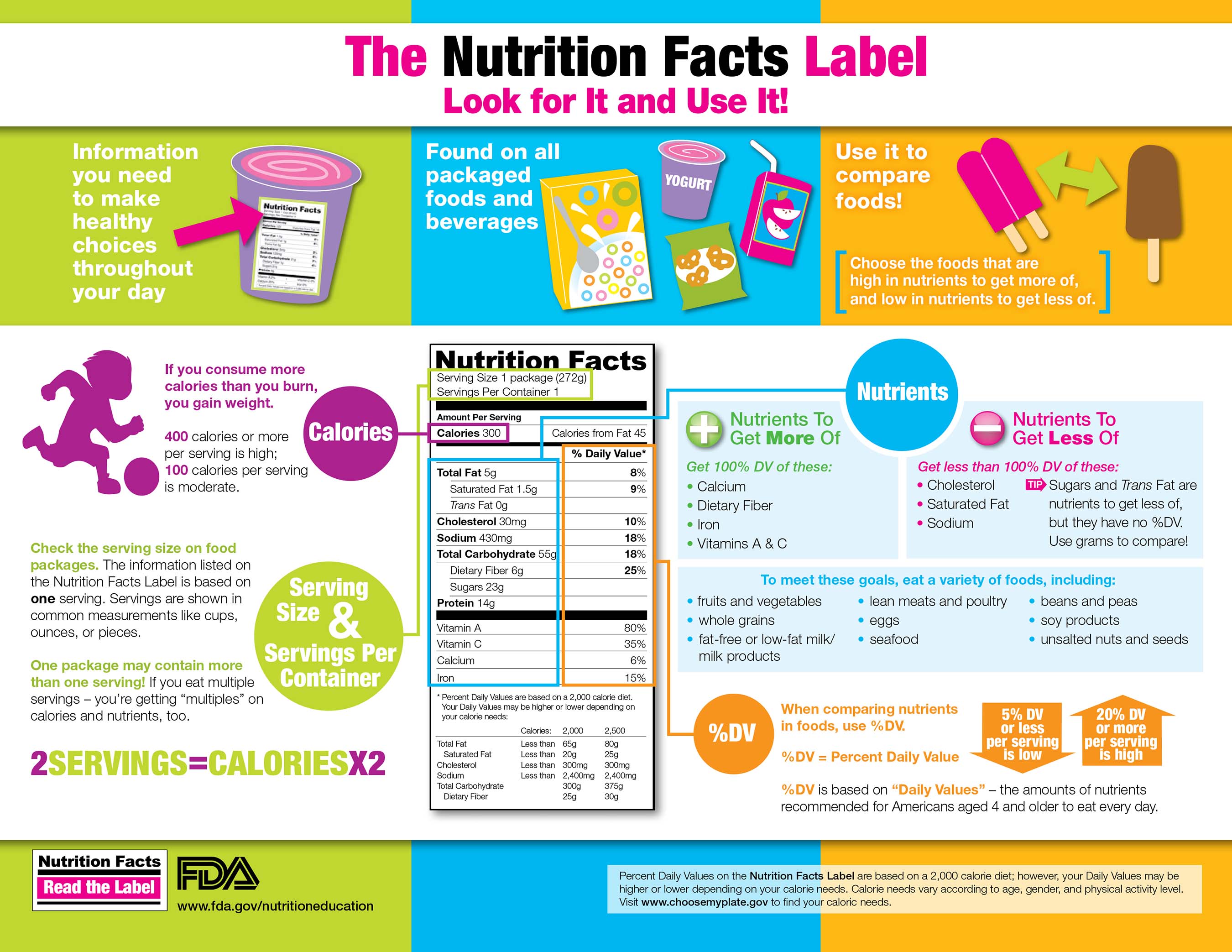
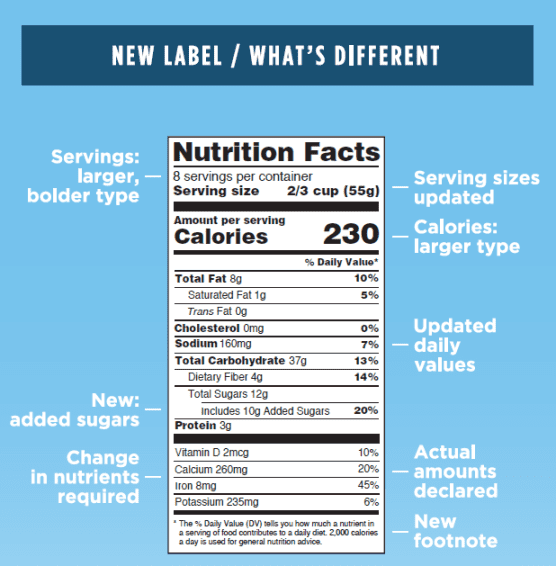
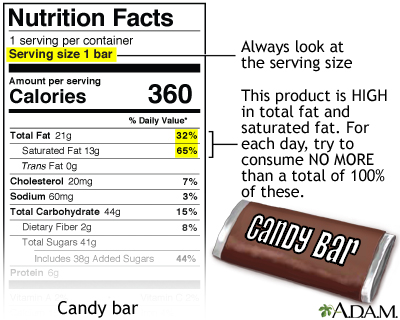

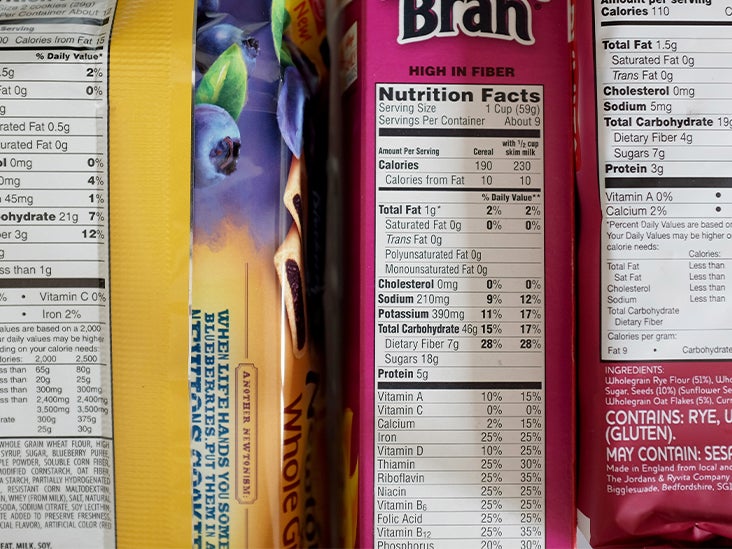
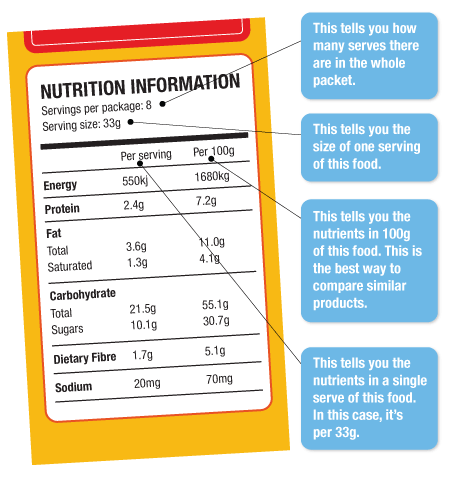


Post a Comment for "41 how to look for calories on food labels"